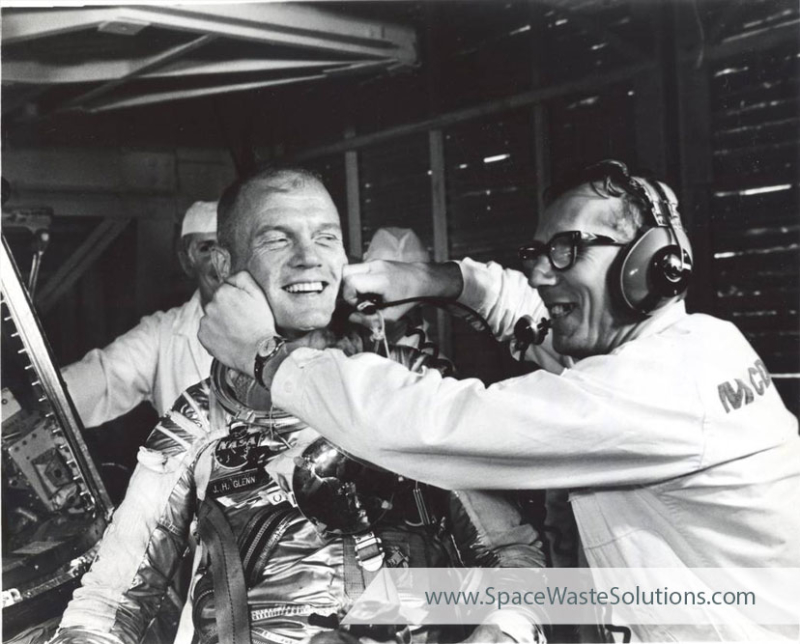
“The most important thing we can do is inspire young minds and to advance the kind of science, math and technology education that will help youngsters take us to the next phase of space travel.” – John Glenn
Mark Your Calendars
October brings the first artificial satellite and John Glenn’s return to space 36 years after he first orbited Earth.
Here are three historic space dates for October:
October 4, 1957
Launched into an elliptical low Earth orbit on October 4, 1957, Sputnik I became the first artificial satellite to be launched into space. The satellite transmitted until its batteries died, 21 days after launch. Sputnik I reentered Earth’s atmosphere on January 4, 1958 and burned up on reentry.
The Soviet Union’s successful launch of Sputnik I is credited for triggering the Space Race. It also set the stage for a slew of political, military, technological and scientific developments.
October 11, 1968
The launch of Apollo 7 marked the first space flight mission since the tragic Apollo 1 fire that killed astronauts Virgil “Gus” Grissom, Ed White and Roger Chaffee in January 1967. After being grounded and investigated for 21 months, NASA returned to the space race.
Apollo 7 was an Earth-orbit test of the command and service modules. Apollo 7 also brought the first live television broadcast from an American spacecraft. Walter M. Schirra commanded Apollo 7 and is the only astronaut to fly Mercury, Gemini and Apollo missions.
October 29, 1998
At the age of 77, John Glenn returned to space aboard the Space Shuttle Discovery as a payload specialist. The mission lasted nine days and was part of a study on health problems associated with aging. By participating in the missions, John Glenn became the oldest person ever to fly in space.
After his historic flight in 1962, John Glenn came to be viewed as a national hero. Because of his status, he was viewed at too valuable of an asset to risk losing. As a result, John Glenn was essential grounded until his triumphant return to space in 1998.
Visit SpaceWasteSolutions.com to find out what what has been left in orbit since beginning of the Space Age.
Image Credit: NASA






